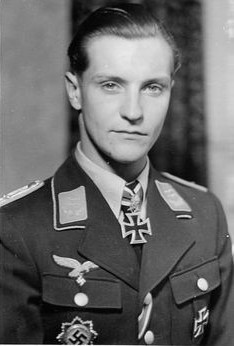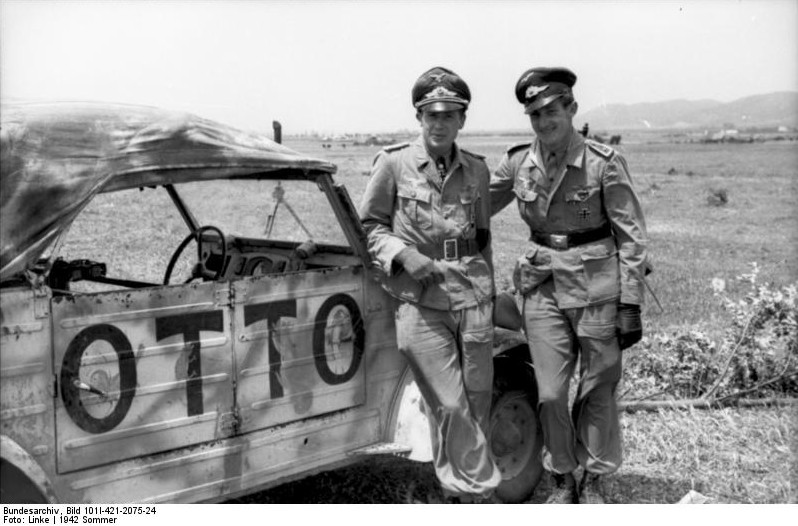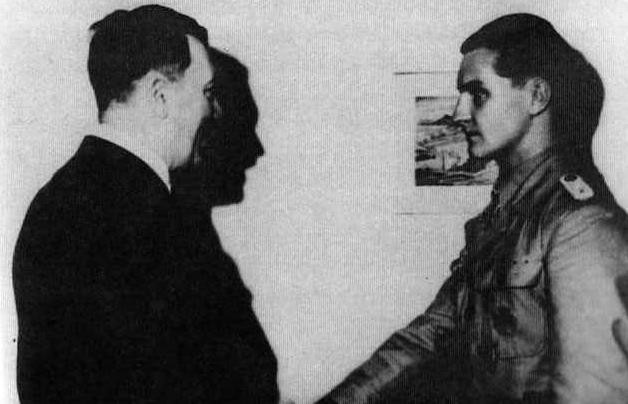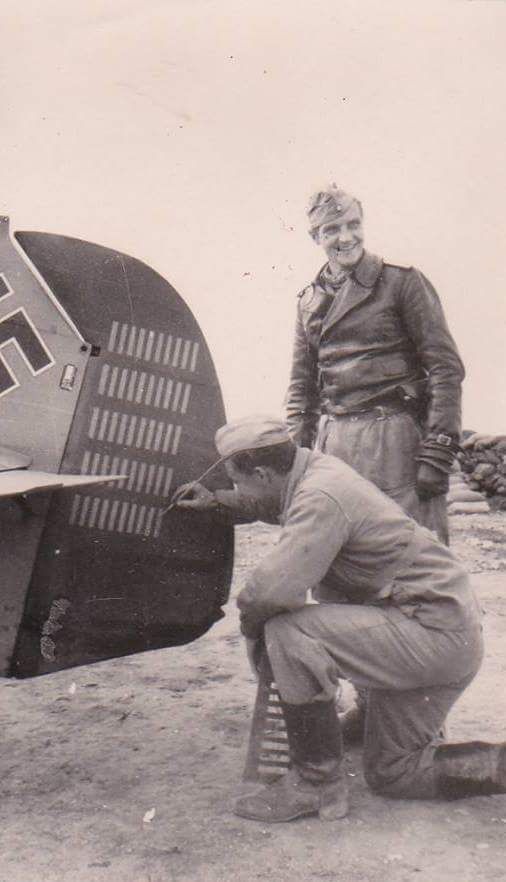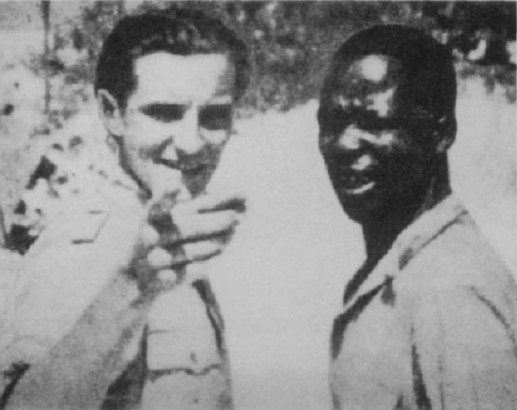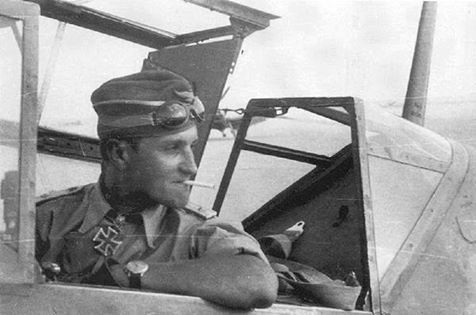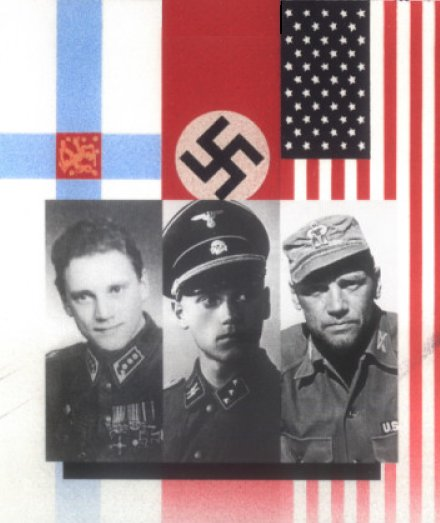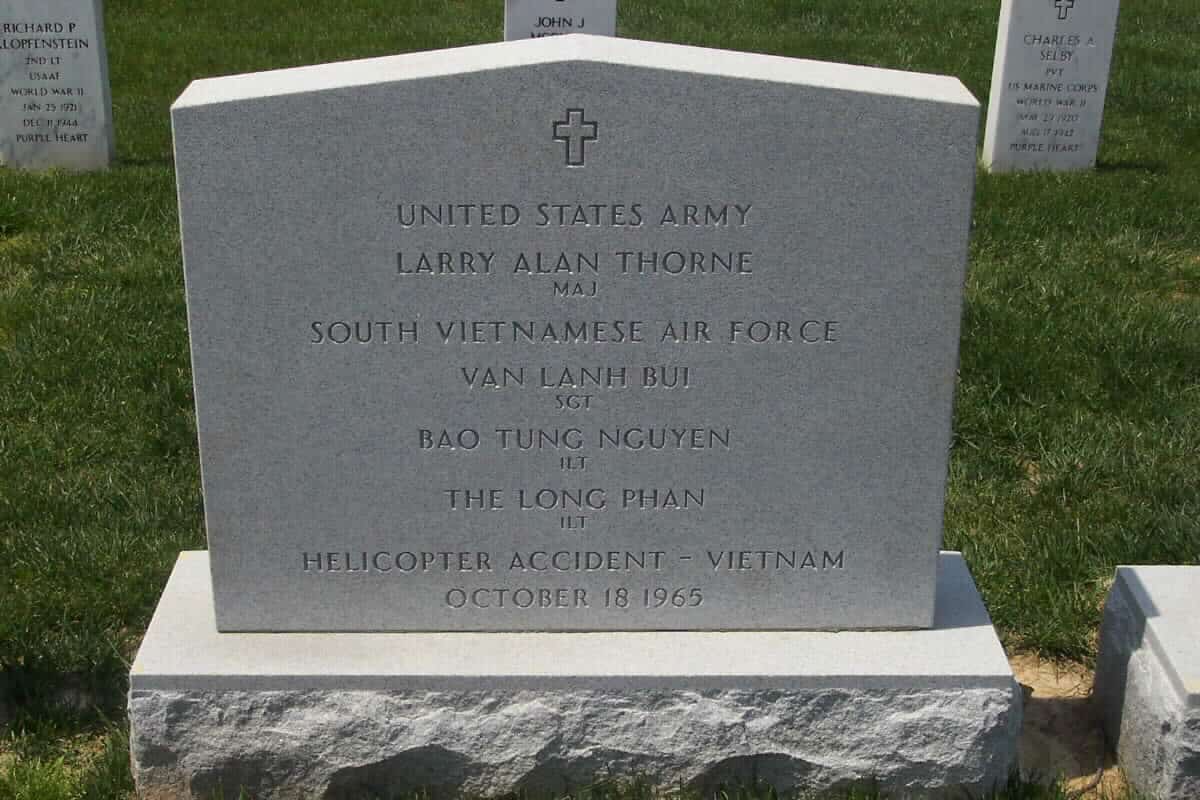- Posts: 119
- Thank you received: 104
Legendary Figures
- Doc
-
 Topic Author
Topic Author
- Offline
- Good day!
Less
More
5 years 2 months ago - 5 years 2 months ago #1
by Doc
His parents divorced when he was still young, and he remained with his mother. He took interest to music as a child, and he was classically trained in piano; this interest would continue even after the start of his military career, as shown by his large records collection, most of which were of the American Jazz genre. He was a rebellious teen, driven in whatever interested him at the time but lazy with the mundane. Between Mar and Aug 1938, he fulfilled his mandatory service with the Reich Labor Service, and in Oct 1938 he began basic infantry training.
He received flight training at Jagdfliegerschule 5 flight school in Schwechat, Austria. Although he excelled both academically and in the cockpit, his rebelliousness nature caused his record to be tainted with a great many reprimands. On a few occasions he was found drunk just before flight, which was a dismissal offense, and once he landed on the autobahn without authorization just because he needed to urinate, knowing well that it could lead to a court martial.
Marseille's performance as a fighter pilot shined brighter by the day, not only regularly scoring multiple kills during each sortie, but he also amazingly spent very little ammunition with each kill. Perhaps reflecting chivalrous values of a prior era, he always aimed at the engines of his victims and avoided shooting at the cockpits, so that his victims would have a greater chance of survival. On more than one occasion, as he noticed that his victims became wounded or could not see out of their cockpit windows, he would fly alongside the enemy aircraft in an attempt to guide his victims to a potential safe crash landing. He had also made several flights over enemy airfields, risking being shot down by anti-aircraft defenses in order to deliver messages about the fate of Allied pilots who were shot down in battle. Two such flights were made for Australian pilot Lieutenant Pat Byers, with the first flight made to inform his squadron mates that Byers was shot down but was under the care of German doctors, and the second flight delivering a message of condolence that Byers had passed away from his wounds several days later.
When presented with the opportunity to display his anti-Nazi sentiments, Hans-Joachim Marseille jumped at it. Marseille was once invited to perform at the home of Willy Messerschmitt, a German fighter plane designer. In attendance at Messerschmitt’s party were the Goebbles family, Hermann Goering, and Adolf Hitler himself.
Initially, Marseille followed instructions and played pieces that Hitler had expressed affection for, including Beethoven’s “Für Elise.” Following those performances, however, it seemed Marseille couldn’t resist a public dig at Hitler – knowing full well of the Fuhrer’s disdain for American Jazz, Marseille began playing ragtime on the piano.
Hitler apparently stood up immediately, raised his hand, and said, “I think we’ve heard enough.”
After meeting Hitler in 1942, Marseille spoke to his friend Eduard Neumann about the meeting. Neumann recalled that Marseille was unimpressed: “After his first visit with Hitler, Marseille returned and said that he thought ‘the Führer was a rather odd sort’.”
Marseille, not a member of the Nazi party, was also recorded as saying disapproving things of Hitler, even while in the company of SS officers. When asked if he would ever consider joining the Nazi party, Marseille responded “that if he saw a party worth joining, he would consider it, but there would have to be plenty of attractive women in it.”
Heaton and Lewis claim Hitler himself was reportedly hurt by the comments, as well as “puzzled” by them.
The achievement for which he is probably best remembered came on 1 September. Taking off at 07:30 to escort Ju87 Stukas, he spotted 10 Kittyhawks approaching just as the dive-bombers began their attack. In the space of two minutes he shot down two of the fighters; then, as the Ju87s withdrew, he accounted for another. On the way back to base, his flight was intercepted by Spitfires and during the next nine minutes, six of them had fallen to Marseille's guns. On landing at 09:14, his armourer found that he had used just 20 cannon shells and 60 rounds of machine-gun ammunition to down nine aircraft. That day he flew two more sorties and claimed another eight aircraft, including five P-40s in the space of six minutes. His total of 17 in one day was only beaten once, by Emil Lang on the Russian Front.
The following day it was announced that Marseille would be presented with his Diamonds personally by the Fuhrer in the autumn, but fate was to decree otherwise and neither he, nor his family, ever received them. His joy was tempered by sad news on 5 September when his best friend, 'Fifi' Stahlschmidt (59 kills), was killed. Marseille became increasingly withdrawn and morose, and although he added 26 more victories to his total by the end of the month, his overall condition caused some concern among his friends.
While he knew it was a great honor, he knew that once he had his hands on this decoration, there was a good chance that he would be recalled to Germany to serve in morale-raising roles. Such a transfer would remove him from his fellow pilots and his good friend Mathias.
Mathias was the nickname given to South African prisoner of war Corporal Mathew Letulu, who Marseille had taken on initially as his servant, but very quickly became a close friend. Marseille knew that as his kill score grew, the chance of him being pulled from the front lines increased every day, and if he was to be taken away, Mathias, who was black, might be in danger given the Nazi racial philosophy. With utmost seriousness, he had his fellow pilot Ludwig Franzisket promise to become Mathias' protector should Marseille lose the capability to be in that role.
On the morning of Wednesday 30 September he took off with Oblts Schlang and Poettgen to carry out a sweep in the Cairo area. Marseille was flying a new 'G' model Bf109. Upon returning from the uneventful patrol at about a height of 4,500 feet, a glycol line broke and set the oil cooler on fire. As his cockpit filled with smoke, he opened the small windscreen ventilator to clear it. This had little effect, and his companions pleaded with him over their radios to bale out. However, the trio of Bf 109s were still three minutes flying time away from the safety of the German lines, and Marseille had no desire to become a PoW. The cockpit continued to fill with acrid smoke, preventing him seeing or breathing properly; his wing man tried to guide him, but it became obvious that the 109 was doomed.
As soon as the trio crossed the line, Marseille flicked his aircraft on to its back, jettisoned the canopy and tried to drop clear, but he had not realized that the aircraft was in a nose-down attitude and centrifugal force held him firmly in place. He eventually struggled free, but as he fell was knocked unconscious by a massive blow to the left side of his chest from the fin that carried the 158 kill markings. He never recovered to deploy his parachute and fell to his death four miles south of Sidi Abdul Rahman.
His final score included 101 Curtiss Tomahawks and Kittyhawks, 30 Hurricanes, 16 Spitfires and 4 bombers ... Adolf Galland was moved to call him, 'the unrivalled virtuoso among fighter pilots of the Second World War' with a total of 158 confirmed kills, seven during the Battle of Britain.
The simple plaque erected over his grave by the pilots of JG27 was perhaps the most fitting epitaph of all:
Legendary Figures was created by Doc
Hans "Jochen" Marseille
13 Dec 1919 - 30 Sep 1942
13 Dec 1919 - 30 Sep 1942
His parents divorced when he was still young, and he remained with his mother. He took interest to music as a child, and he was classically trained in piano; this interest would continue even after the start of his military career, as shown by his large records collection, most of which were of the American Jazz genre. He was a rebellious teen, driven in whatever interested him at the time but lazy with the mundane. Between Mar and Aug 1938, he fulfilled his mandatory service with the Reich Labor Service, and in Oct 1938 he began basic infantry training.
He received flight training at Jagdfliegerschule 5 flight school in Schwechat, Austria. Although he excelled both academically and in the cockpit, his rebelliousness nature caused his record to be tainted with a great many reprimands. On a few occasions he was found drunk just before flight, which was a dismissal offense, and once he landed on the autobahn without authorization just because he needed to urinate, knowing well that it could lead to a court martial.
Marseille's performance as a fighter pilot shined brighter by the day, not only regularly scoring multiple kills during each sortie, but he also amazingly spent very little ammunition with each kill. Perhaps reflecting chivalrous values of a prior era, he always aimed at the engines of his victims and avoided shooting at the cockpits, so that his victims would have a greater chance of survival. On more than one occasion, as he noticed that his victims became wounded or could not see out of their cockpit windows, he would fly alongside the enemy aircraft in an attempt to guide his victims to a potential safe crash landing. He had also made several flights over enemy airfields, risking being shot down by anti-aircraft defenses in order to deliver messages about the fate of Allied pilots who were shot down in battle. Two such flights were made for Australian pilot Lieutenant Pat Byers, with the first flight made to inform his squadron mates that Byers was shot down but was under the care of German doctors, and the second flight delivering a message of condolence that Byers had passed away from his wounds several days later.
When presented with the opportunity to display his anti-Nazi sentiments, Hans-Joachim Marseille jumped at it. Marseille was once invited to perform at the home of Willy Messerschmitt, a German fighter plane designer. In attendance at Messerschmitt’s party were the Goebbles family, Hermann Goering, and Adolf Hitler himself.
Initially, Marseille followed instructions and played pieces that Hitler had expressed affection for, including Beethoven’s “Für Elise.” Following those performances, however, it seemed Marseille couldn’t resist a public dig at Hitler – knowing full well of the Fuhrer’s disdain for American Jazz, Marseille began playing ragtime on the piano.
Hitler apparently stood up immediately, raised his hand, and said, “I think we’ve heard enough.”
After meeting Hitler in 1942, Marseille spoke to his friend Eduard Neumann about the meeting. Neumann recalled that Marseille was unimpressed: “After his first visit with Hitler, Marseille returned and said that he thought ‘the Führer was a rather odd sort’.”
Marseille, not a member of the Nazi party, was also recorded as saying disapproving things of Hitler, even while in the company of SS officers. When asked if he would ever consider joining the Nazi party, Marseille responded “that if he saw a party worth joining, he would consider it, but there would have to be plenty of attractive women in it.”
Heaton and Lewis claim Hitler himself was reportedly hurt by the comments, as well as “puzzled” by them.
The achievement for which he is probably best remembered came on 1 September. Taking off at 07:30 to escort Ju87 Stukas, he spotted 10 Kittyhawks approaching just as the dive-bombers began their attack. In the space of two minutes he shot down two of the fighters; then, as the Ju87s withdrew, he accounted for another. On the way back to base, his flight was intercepted by Spitfires and during the next nine minutes, six of them had fallen to Marseille's guns. On landing at 09:14, his armourer found that he had used just 20 cannon shells and 60 rounds of machine-gun ammunition to down nine aircraft. That day he flew two more sorties and claimed another eight aircraft, including five P-40s in the space of six minutes. His total of 17 in one day was only beaten once, by Emil Lang on the Russian Front.
The following day it was announced that Marseille would be presented with his Diamonds personally by the Fuhrer in the autumn, but fate was to decree otherwise and neither he, nor his family, ever received them. His joy was tempered by sad news on 5 September when his best friend, 'Fifi' Stahlschmidt (59 kills), was killed. Marseille became increasingly withdrawn and morose, and although he added 26 more victories to his total by the end of the month, his overall condition caused some concern among his friends.
While he knew it was a great honor, he knew that once he had his hands on this decoration, there was a good chance that he would be recalled to Germany to serve in morale-raising roles. Such a transfer would remove him from his fellow pilots and his good friend Mathias.
Mathias was the nickname given to South African prisoner of war Corporal Mathew Letulu, who Marseille had taken on initially as his servant, but very quickly became a close friend. Marseille knew that as his kill score grew, the chance of him being pulled from the front lines increased every day, and if he was to be taken away, Mathias, who was black, might be in danger given the Nazi racial philosophy. With utmost seriousness, he had his fellow pilot Ludwig Franzisket promise to become Mathias' protector should Marseille lose the capability to be in that role.
On the morning of Wednesday 30 September he took off with Oblts Schlang and Poettgen to carry out a sweep in the Cairo area. Marseille was flying a new 'G' model Bf109. Upon returning from the uneventful patrol at about a height of 4,500 feet, a glycol line broke and set the oil cooler on fire. As his cockpit filled with smoke, he opened the small windscreen ventilator to clear it. This had little effect, and his companions pleaded with him over their radios to bale out. However, the trio of Bf 109s were still three minutes flying time away from the safety of the German lines, and Marseille had no desire to become a PoW. The cockpit continued to fill with acrid smoke, preventing him seeing or breathing properly; his wing man tried to guide him, but it became obvious that the 109 was doomed.
As soon as the trio crossed the line, Marseille flicked his aircraft on to its back, jettisoned the canopy and tried to drop clear, but he had not realized that the aircraft was in a nose-down attitude and centrifugal force held him firmly in place. He eventually struggled free, but as he fell was knocked unconscious by a massive blow to the left side of his chest from the fin that carried the 158 kill markings. He never recovered to deploy his parachute and fell to his death four miles south of Sidi Abdul Rahman.
His final score included 101 Curtiss Tomahawks and Kittyhawks, 30 Hurricanes, 16 Spitfires and 4 bombers ... Adolf Galland was moved to call him, 'the unrivalled virtuoso among fighter pilots of the Second World War' with a total of 158 confirmed kills, seven during the Battle of Britain.
The simple plaque erected over his grave by the pilots of JG27 was perhaps the most fitting epitaph of all:
'Here lies, undefeated, Hauptmann Hans Marseille'
Last edit: 5 years 2 months ago by Doc.
The following user(s) said Thank You: WANGER
Please Log in or Create an account to join the conversation.
- Doc
-
 Topic Author
Topic Author
- Offline
- Good day!
Less
More
- Posts: 119
- Thank you received: 104
4 years 5 months ago - 4 years 5 months ago #2
by Doc
Lauri Alan Törni was born on 28th May, 1919, in Viipuri, Finland, near the border with the Soviet Union. Even at an early age, Lauri was fascinated by the military... "he was born to be a soldier", his father told a Finish author writing the biography of his son. As tensions began to escalate between the Finns and the Soviets, Lauri ended being drafted into the Finnish army in 1938. He was part of the 4th Independent Jäger Infantry Battalion. This unit had the important role of supporting the other troops in key moments during battle.
When the Winter War sparked between the Soviet Union and Finland, Lauri was a mess sergeant and quickly volunteered to lead patrols against the enemy, as his battalion's ranks were becoming thin. On 8th Jan 1940, Lauri led a successful assault through deep snow against a soviet bunker, while taking out several enemy foxholes with grenades and submachine guns, without a single Finnish casualty. Törni’s bravery and daring leadership was noticed by his superiors and thus invited to officers training school.
The Winter War ended on 13th March 1940, with Finland giving the Soviets substantial chunks of land. It is important to note that during the Winter War, the only important military power supporting the Finns against the Soviets was... Nazi Germany. Therefore it is no surprise that the Nazi's asked for veteran volunteers as they were planning for Operation Barbarossa. 1.400 Finnish volunteers signed up for German training under the Waffen SS. Törni was one of them. He joined the SS to fight the communists when Germany attacked the Soviet Union in June 1941. Finland's part in this offensive was to retake its previous lost territories and nothing more.
Lauri received 7 weeks of SS instruction before returning to Finland.
Lauri excelled in commanding a Finnish guerrilla force known as "Detachment Törni". He was so successful that the Soviets placed a 3 million Finnish marks reward on his head, dead or alive. Nobody even attempted to cash in the offer, as Törni has become a legend and was awarded the Mannerheim Cross of Liberty (Finnish equivalent of the Medal of Honor) for his exceptional valor. He was named a Knight of the Mannerheim Cross, one of the 191 men to receive this distinction. He was also rewarded Germany's Iron Cross, for his bravery, "cold-blooded" tactics and "natural leadership talent" citing several pages of his accomplishments in the two wars.
By the end of 1944, as Finland was ready to stop fighting, Lauri was not. He ended up joining the Sonderkommando Nord, a paramilitary unit of Finnish nationals operated by the Gestapo. As of 1945, it was becoming clear the Nazis would lose the war, Lauri told his fellow countrymen they were deceived by the Germans and they decided to desert to Finland. After World War II, a pro-Soviet government was installed in Finland so Lauri was charged for treason and sentenced to 6 years in prison. He escaped and was recaptured several times until he was pardoned in 1948.
Working for the Finnish community in Venezuela in 1950, he got the job on a freighter, carrying ore to the U.S. ports on the Gulf Coast. On one day, when his ship was close enough to Mobile Bay, Alabaman, Lauri literally jumped over board, diving into the water and swimming to America. He didn't understand English, had no money and no future, but a past that reached the ears of William "Wild Bill" Donovan, founding director of the OSS, now known as the CIA.
Lauri's past fighting for the SS was a big problem, so he used a knife to cut out the piece of his left arm that bore a Waffen SS tattoo. As the U.S. Immigration and Naturalization Service started the deportation process, Donovan's law firm lobbied Congress to pass a bill that would grant legal status to Finns present in the US illegally. Lauri Törni now as U.S resident, changed his name to Larry Thorne. He joined the Army on 1st Feb 1954, at 34 years old, starting his new military career as a private in the 77th Special Forces Group(Airborne). Larry's abilities were again quickly noticed and after attending Officer Candidate School, he was commissioned as first lieutenant in January 1947. He was then promoted to Captain and assigned to the 10th Special Forces Group (Airborne) in Germany.
A little detour to a film made in Germany by the Army Signal Corps, "Phantom Fighters" is a movingly meaningful television documentary about American soldiers trained to organize guerrilla resistance in enemy occupied territories. In a field training exercise, the many and varied skills of the Tenth are put to the test. They include a parachute jump, a mountain climb on skis, destruction of a bridge on the River Ammer, and a race to outdistance the enemy. It's a rugged, exciting life as evidenced on film and no soldier with Tenth Special Forces would have it any other way. Every man is a volunteer qualified to carry out hazardous and adventurous assignments. In no other branch of the United States military services is the standard of physical fitness higher than in Special Forces.
While in Germany, Thorne was selected to lead his team on a mission to recover bodies and classified equipment from an army transport that went down in January 1962, in the Zagros mountains of Iran, near the Soviet borders. Several missions have already failed and the U.S. Army wanted to prevent the soviets from obtaining the classified equipment. Thorne and his men climbed the dangerous mountain terrain, through 6 meters of snow sometimes, found the bodies and retrieved the equipment.
In 1964, Larry switched the snow and ice with the jungle, high humidity and mosquitos. Applying the same unconventional tactics that commended his style, he led a variety of counterinsurgency missions, search and destroy and base defense. He succeeded in everything and his men trusted his instincts, abilities for meticulous planning, skillfully analyzing the battlefield and always ready with a backup plan in case the mission ran into trouble: "He didn't go into an operation thinking everything would go well. He spent weeks planning every single detail."
On his first tour, Thorne and his covert operations team had their camp at Tinh Bien, in the Mekong Delta, along South Vietnam's border with Cambodia. The camp was still under construction and vulnerable to attack. To buy more time for the construction to be finished, Thorne was able to stage a diversion for the Viet Cong that would cross the river into Cambodia, right into the area where Khmer Krom, a Cambodian bandit unit, was operating.
Soon the Viet Cong and Khmer Krom started fighting each other, while Larry's team and 100 allied fighters attacked from the rear crushing both Viet Cong and Khmer Krom. A few days later, after the Ting Bien camp was completed, the enemy was infiltrating the area to attack it. There was very little Larry could do to prevent it, but he secretly positioned mines at his own MG positions, so that detonations would kill infiltrators but not destroy the guns. As soon as the Viet Cong was on top of the MG positions, Larry set off the explosives and his troops ran to the machine guns, starting to fire back at the enemy. Despite the great effort, Ting Bien was almost overwhelmed and Larry was forced to call in an airstrike, which dropped napalm and strafed the VC with .50 caliber machine guns. The base held.
On his second tour in 1965, Thorne organized and coordinated multiple missions for five reconnassance teams. Working closely with operatives on the ground to monitor enemy movements, Thorne again anticipated the enemy’s intentions—an attack on Nha Trang air base on the coast in central South Vietnam. Col. J. M. Spears, commander of the 5th Special Forces Group, lauded Thorne’s intelligence work: “Thus far in Vietnam, there has been only one Viet Cong attack on a major U.S. installation in which the enemy did not achieve surprise. This one instance was the attack of Nha Trang airbase on 25 June in which damage was minimized because the prompt response of defense elements disrupted the Viet Cong effort. It was Captain Thorne’s work that made this action possible.”
Thorne was later transferred to MACV-SOG, a classified, highly secret organization of elite troops that included Green Berets, Navy SEALs and Air Force special operation teams. Larry's last mission was on 18th October 1965, during Operation Shining Brass in Laos. The mission was to locate enemy supply dumps that could later be destroyed by the South Vietnamese air force. He was commanding the recon team from one of the two CH-34 Sikorsky helicopters that would return to base once the insertion zone was secured. Just as the unit landed, heavy rain started to fall and dense clouds enveloped Thorne's helicopter.
He fought to keep his helicopter safe at zero visibility. Larry radioed the base several times, but then there was silence from his helicopter. Larry was reported missing and more than 50 search-and-rescue missions were flown. He couldn't be found. Thorne was declared killed in action a year later and posthumously promoted to Major. His men refused to believe he was dead. In summer 1999, a Defense Department task force, with the help of the Vietnamese government, carried out a search mission and found the chopper crashed on a steep slope of the jungle-covered mountain.
Larry Thorne was 46 when he died. Thorne received the Distinguished Flying Cross, Two Purple Hearts, Bronze Star Medal and was nominated for the Silver Star.
Replied by Doc on topic Legendary Figures
Lauri Alan Törni was born on 28th May, 1919, in Viipuri, Finland, near the border with the Soviet Union. Even at an early age, Lauri was fascinated by the military... "he was born to be a soldier", his father told a Finish author writing the biography of his son. As tensions began to escalate between the Finns and the Soviets, Lauri ended being drafted into the Finnish army in 1938. He was part of the 4th Independent Jäger Infantry Battalion. This unit had the important role of supporting the other troops in key moments during battle.
When the Winter War sparked between the Soviet Union and Finland, Lauri was a mess sergeant and quickly volunteered to lead patrols against the enemy, as his battalion's ranks were becoming thin. On 8th Jan 1940, Lauri led a successful assault through deep snow against a soviet bunker, while taking out several enemy foxholes with grenades and submachine guns, without a single Finnish casualty. Törni’s bravery and daring leadership was noticed by his superiors and thus invited to officers training school.
The Winter War ended on 13th March 1940, with Finland giving the Soviets substantial chunks of land. It is important to note that during the Winter War, the only important military power supporting the Finns against the Soviets was... Nazi Germany. Therefore it is no surprise that the Nazi's asked for veteran volunteers as they were planning for Operation Barbarossa. 1.400 Finnish volunteers signed up for German training under the Waffen SS. Törni was one of them. He joined the SS to fight the communists when Germany attacked the Soviet Union in June 1941. Finland's part in this offensive was to retake its previous lost territories and nothing more.
Lauri received 7 weeks of SS instruction before returning to Finland.
Lauri excelled in commanding a Finnish guerrilla force known as "Detachment Törni". He was so successful that the Soviets placed a 3 million Finnish marks reward on his head, dead or alive. Nobody even attempted to cash in the offer, as Törni has become a legend and was awarded the Mannerheim Cross of Liberty (Finnish equivalent of the Medal of Honor) for his exceptional valor. He was named a Knight of the Mannerheim Cross, one of the 191 men to receive this distinction. He was also rewarded Germany's Iron Cross, for his bravery, "cold-blooded" tactics and "natural leadership talent" citing several pages of his accomplishments in the two wars.
By the end of 1944, as Finland was ready to stop fighting, Lauri was not. He ended up joining the Sonderkommando Nord, a paramilitary unit of Finnish nationals operated by the Gestapo. As of 1945, it was becoming clear the Nazis would lose the war, Lauri told his fellow countrymen they were deceived by the Germans and they decided to desert to Finland. After World War II, a pro-Soviet government was installed in Finland so Lauri was charged for treason and sentenced to 6 years in prison. He escaped and was recaptured several times until he was pardoned in 1948.
Working for the Finnish community in Venezuela in 1950, he got the job on a freighter, carrying ore to the U.S. ports on the Gulf Coast. On one day, when his ship was close enough to Mobile Bay, Alabaman, Lauri literally jumped over board, diving into the water and swimming to America. He didn't understand English, had no money and no future, but a past that reached the ears of William "Wild Bill" Donovan, founding director of the OSS, now known as the CIA.
Lauri's past fighting for the SS was a big problem, so he used a knife to cut out the piece of his left arm that bore a Waffen SS tattoo. As the U.S. Immigration and Naturalization Service started the deportation process, Donovan's law firm lobbied Congress to pass a bill that would grant legal status to Finns present in the US illegally. Lauri Törni now as U.S resident, changed his name to Larry Thorne. He joined the Army on 1st Feb 1954, at 34 years old, starting his new military career as a private in the 77th Special Forces Group(Airborne). Larry's abilities were again quickly noticed and after attending Officer Candidate School, he was commissioned as first lieutenant in January 1947. He was then promoted to Captain and assigned to the 10th Special Forces Group (Airborne) in Germany.
A little detour to a film made in Germany by the Army Signal Corps, "Phantom Fighters" is a movingly meaningful television documentary about American soldiers trained to organize guerrilla resistance in enemy occupied territories. In a field training exercise, the many and varied skills of the Tenth are put to the test. They include a parachute jump, a mountain climb on skis, destruction of a bridge on the River Ammer, and a race to outdistance the enemy. It's a rugged, exciting life as evidenced on film and no soldier with Tenth Special Forces would have it any other way. Every man is a volunteer qualified to carry out hazardous and adventurous assignments. In no other branch of the United States military services is the standard of physical fitness higher than in Special Forces.
While in Germany, Thorne was selected to lead his team on a mission to recover bodies and classified equipment from an army transport that went down in January 1962, in the Zagros mountains of Iran, near the Soviet borders. Several missions have already failed and the U.S. Army wanted to prevent the soviets from obtaining the classified equipment. Thorne and his men climbed the dangerous mountain terrain, through 6 meters of snow sometimes, found the bodies and retrieved the equipment.
In 1964, Larry switched the snow and ice with the jungle, high humidity and mosquitos. Applying the same unconventional tactics that commended his style, he led a variety of counterinsurgency missions, search and destroy and base defense. He succeeded in everything and his men trusted his instincts, abilities for meticulous planning, skillfully analyzing the battlefield and always ready with a backup plan in case the mission ran into trouble: "He didn't go into an operation thinking everything would go well. He spent weeks planning every single detail."
On his first tour, Thorne and his covert operations team had their camp at Tinh Bien, in the Mekong Delta, along South Vietnam's border with Cambodia. The camp was still under construction and vulnerable to attack. To buy more time for the construction to be finished, Thorne was able to stage a diversion for the Viet Cong that would cross the river into Cambodia, right into the area where Khmer Krom, a Cambodian bandit unit, was operating.
Soon the Viet Cong and Khmer Krom started fighting each other, while Larry's team and 100 allied fighters attacked from the rear crushing both Viet Cong and Khmer Krom. A few days later, after the Ting Bien camp was completed, the enemy was infiltrating the area to attack it. There was very little Larry could do to prevent it, but he secretly positioned mines at his own MG positions, so that detonations would kill infiltrators but not destroy the guns. As soon as the Viet Cong was on top of the MG positions, Larry set off the explosives and his troops ran to the machine guns, starting to fire back at the enemy. Despite the great effort, Ting Bien was almost overwhelmed and Larry was forced to call in an airstrike, which dropped napalm and strafed the VC with .50 caliber machine guns. The base held.
On his second tour in 1965, Thorne organized and coordinated multiple missions for five reconnassance teams. Working closely with operatives on the ground to monitor enemy movements, Thorne again anticipated the enemy’s intentions—an attack on Nha Trang air base on the coast in central South Vietnam. Col. J. M. Spears, commander of the 5th Special Forces Group, lauded Thorne’s intelligence work: “Thus far in Vietnam, there has been only one Viet Cong attack on a major U.S. installation in which the enemy did not achieve surprise. This one instance was the attack of Nha Trang airbase on 25 June in which damage was minimized because the prompt response of defense elements disrupted the Viet Cong effort. It was Captain Thorne’s work that made this action possible.”
Thorne was later transferred to MACV-SOG, a classified, highly secret organization of elite troops that included Green Berets, Navy SEALs and Air Force special operation teams. Larry's last mission was on 18th October 1965, during Operation Shining Brass in Laos. The mission was to locate enemy supply dumps that could later be destroyed by the South Vietnamese air force. He was commanding the recon team from one of the two CH-34 Sikorsky helicopters that would return to base once the insertion zone was secured. Just as the unit landed, heavy rain started to fall and dense clouds enveloped Thorne's helicopter.
He fought to keep his helicopter safe at zero visibility. Larry radioed the base several times, but then there was silence from his helicopter. Larry was reported missing and more than 50 search-and-rescue missions were flown. He couldn't be found. Thorne was declared killed in action a year later and posthumously promoted to Major. His men refused to believe he was dead. In summer 1999, a Defense Department task force, with the help of the Vietnamese government, carried out a search mission and found the chopper crashed on a steep slope of the jungle-covered mountain.
Larry Thorne was 46 when he died. Thorne received the Distinguished Flying Cross, Two Purple Hearts, Bronze Star Medal and was nominated for the Silver Star.
Last edit: 4 years 5 months ago by Doc.
The following user(s) said Thank You: Juanma66, Maki, WANGER
Please Log in or Create an account to join the conversation.
Birthdays
- N ø b ø d y
- NIB in 2 days
- xXTravmon in 5 days
- Tecnom in 9 days


